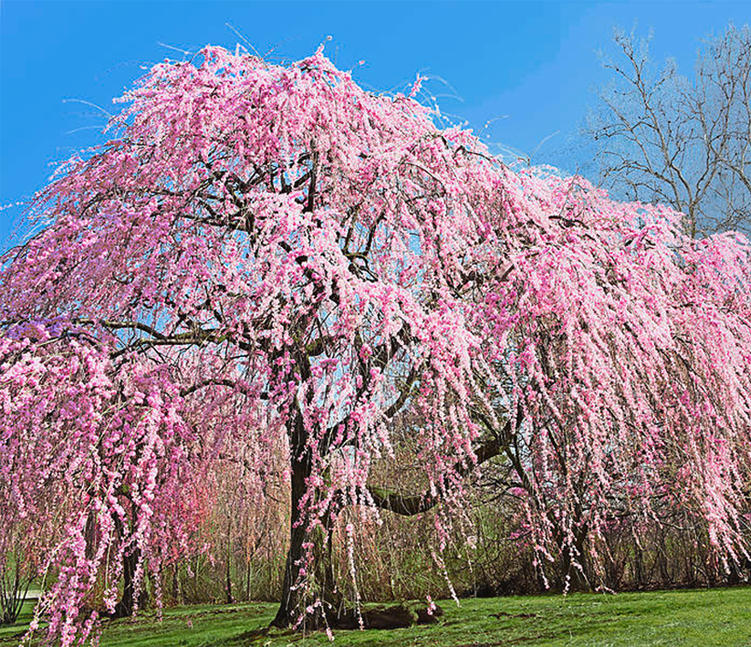Posts by dincheradmin
Tree Topping
The practice of tree topping is on the increase again in our area. Topping is cutting a tree to a certain height by stubbing the branches. This practice is extremely harmful to trees, and will lead to long term problems with tree health.
Topping is performed by untrained tree companies who care little about tree health management. It may take several years of corrective pruning to restore the tree’s crown. Topped trees are more susceptible to storm damage and branch failure.
Ironically, the main reason trees are topped is to make them safe. The exact opposite occurs. Please hire reputable Certified Arborists to prune your trees.
Late Fall
Late fall is an excellent time for tree planting. Dormant trees will continue to promote root growth. This allows better root recovery with no stress to support leaves. Trees should be already dormant before digging. Bare root or traditional ball and burlap can be used.
Wood Rot Fungi
Wood rot fungal fruiting bodies are highly visible this time of year, especially following high moisture. These are an indicator of serious decay in roots or trunk of trees. Have trees looked at and evaluated for risk.
Emerald Ash Borer
Emerald Ash Borer has been confirmed in Wyoming County. The whole state is under quarantine for wood products coming and leaving PA. Monitoring efforts continue in all counties of the state.
Hot, dry weather
Water newly planted trees at least 3 times weekly with 10-20 gallons of water. Continue watering until normal rainfall occurs.
Spring Seasonal Alerts
As trees leaf out several pests tend to appear.
Gypsy Moth larvae will start to feed on new leaves. Severe infestations can defoliate trees quickly. Luckily cool wet weather will reduce the pest population due to disease. Trees will also recover better with adequate moisture.
Forest Tent Caterpillar is very similar to Gypsy Moth. This pest was severe in the Northern Tier Counties last year (2010)
Anthracnose Several species of trees are susceptible to a fungal disease called Anthracnose. Sycamore is the most obvious with new leaves being destroyed as the emerge. The tree continues to push out new leaves. Oak, Ash, and Maples species also are attacked by Anthracnose. During cool we springs and early summer leaves will become spotted and deformed and will fall from the tree. All forms of Anthracnose are spread by rain water splashing. Rake and destroy all fallen leaves to contain an infestation. Anthracnose will disappear when the weather warms up and dries out. The fungus remains dormant as spores which will sporulate when environmental conditions are right.
Storm Damage
Heavy storms can weaken the structure of some trees. Support systems can help damaged trees stay together for several years after the damage occurs. These systems can also be installed to help prevent storm damage.
Weeping Flowering Cherry
(Prunus subhertilla pendula)
The weeping Cherry is one of the first spring flowers to arrive. Pink or White blooms appear in Mid – Late April and will persist for about 3 weeks.
A car struck and destroyed my tree. How can a damage estimate be obtained?
As with most material goods, trees and landscape plants have a fiscal value. A plant appraisal can be performed by a qualified professional with extensive knowledge of plants as well as good common sense. The simplest appraisal would be a replacement cost value. This would entail the cost of removal of the damaged tree plus the cost of a replacement tree. This is usually limited to around a 4 inch caliper tree. It is highly impractical to replace large diameter trees due to the large size and weight of these trees.
The second appraisal method would be the ISA trunk formula method. This method relies heavily with the appraiser’s expertise and integrity. Large caliper trees can be appraised using this court approved method. Another appraisal can be the difference in real estate values due to the loss of a tree, or landscaping. A real estate appraiser would have to be brought in as part of the appraisal team.
Finally a cost of cure method would appraise the damage by determining how much it would cost to restore the damage to an acceptable appearance. As you can see, appraisal can be a complicated process, often with more than one appraiser to reach a fair settlement.
I am planning to buy a home in a heavily wooded lot. How can I tell if the trees are safe and healthy?
There are a few basics to look for when evaluating tree health. First check for dead trees, these can fall and damage property. Next look for large dead branches in trees; this can be a sign of stress or decline in tree health. Beyond these two basic conditions tree health should be evaluated by a professional. A Certified Arborist has training in detection of tree defects. Some trees appear perfectly healthy but could be full of decay. This decay could be hard to detect especially in roots. Decay is the number one defect causing tree failure. A tree risk evaluation can be done for any or all of your trees in question. Expect to pay a fee for this service. Trees greatly increase real estate values and buying property with mature trees will be worth the investment as long as the trees are in good condition.





